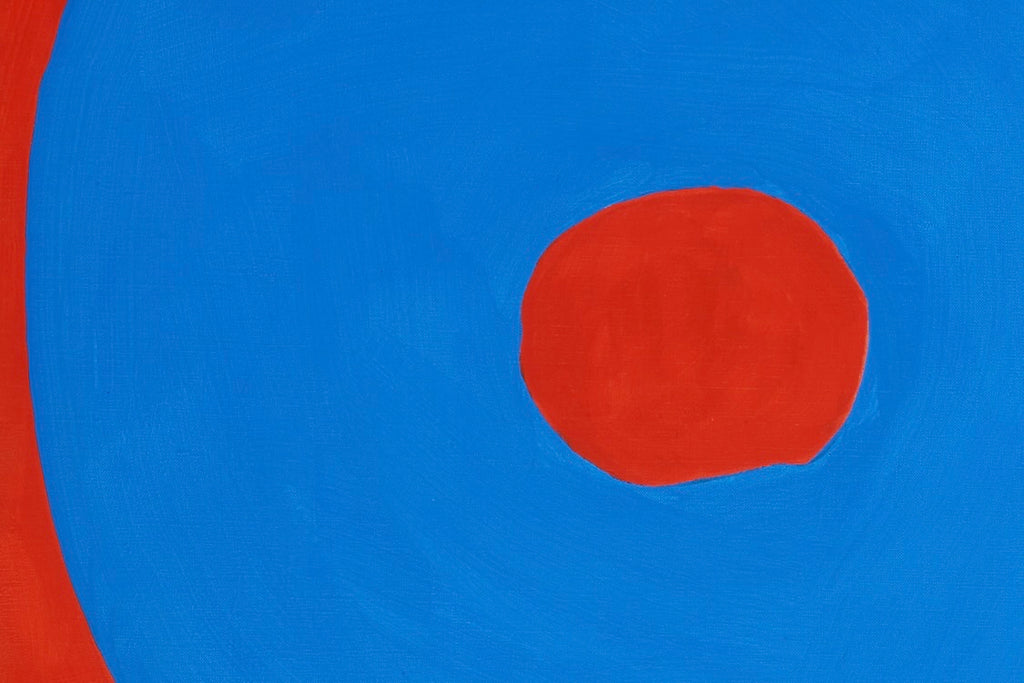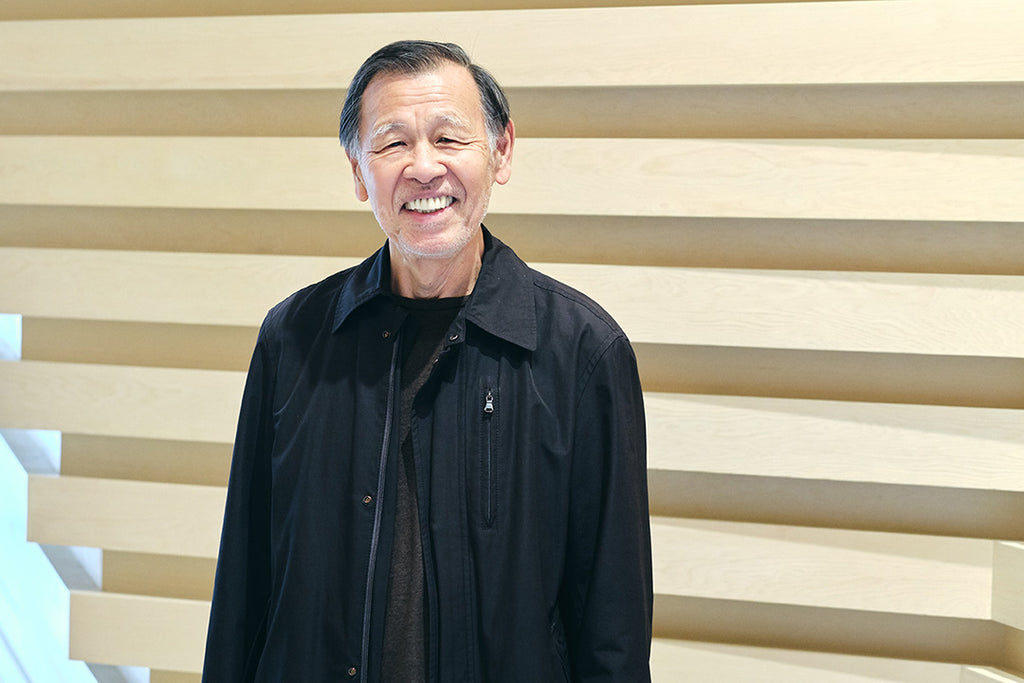ARTICLES
Echoes of Silence: Tadaaki Kuwayama & Rakuko Naito's Minimalist Exploration
2024.02.09
EXHIBITION

“Tadaaki Kuwayama & Rakuko Naito: In Silence: An Ode to Nothing” Whitestone Gallery Hong Kong
Last summer, Tadaaki Kuwayama passed away, marking the conclusion of a chapter in art history defined by his unwavering commitment to minimalist art rooted in New York. Presently, the exhibition showcasing the works of Kuwayama and his wife, Rakuko Naito, is underway at Whitestone Gallery Hong Kong. Naomi, a member of Whitestone Gallery's team, shares the journey of these minimal art pioneers who eschewed assertion, narrative, and humanity delving into the realm of pure artistry.
Tadaaki Kuwayama & Rakuko Naito: In Silence: An Ode to Nothing

“Tadaaki Kuwayama & Rakuko Naito: Beautiful Nothing” at Whitestone Gallery Taipei Neihu, 2019.
In Silence: An Ode to Nothing
Tadaaki Kuwayama “TK6671-1/2-'68” “TK6371-1/2-'68”, 1968, 180.3×180.3cm, Acrylic on canvas.
There was one aesthetic trend used to engulf every aspect of my tween era. Minimalism, which found a resemblance to clarity, purity and singularity, was somehow ubiquitous over schools, Pinterest mood boards and even celebrity headlines. But until recently, I’ve found epiphanies in the artistic attribute of Minimalism from seeing the latest exhibition of Whitestone Gallery in Hong Kong entitled In Silence: An Ode to Nothing. This exhibition focuses on the bodies of work from Minimalist Tadaaki Kuwayama and Rakuko Naito. Now, I will share with you my extensive research — broadly but clearly enough — of what Minimalism is about.
What is Minimalism?
In art, Minimalism means an absence from our neutral propensities to reasons, sentiments and individuality to achieve a sense of “nothingness”, which fellow art critics define as thematic simplicity or radical neutrality. However, such pursuit became elusive throughout centuries for us as emotional beings. As humans are filtered with a prism of conditioned thoughts from the real world. And yet, there was a group of avant-garde emerging in 1960s New York, who aimed to stave their art in the core of “nothing”. In dissonance of other significant art movements during that period, these artists present their works devoid of all the traditional norms in paintings. There was a famous quote from affirmed Minimalist Frank Stella emphasizing an important facet of Minimalism — “Removing the unnecessary”.
The History of Minimalism in Art
“Tadaaki Kuwayama & Rakuko Naito: In Silence: An Ode to Nothing” Whitestone Gallery Hong Kong.
Speaking of the birth of Minimalism, we need to clock back to 1960s. With the inheritance of European culture permeated in American society during the warring states periods, New York began to arise as a holy grail in 1960s for its unflagging opportunities. Esteemed writer John Osborne has pictured the New York vibrant art scene as: “Confidence, inventiveness and largeness of ambition.” Indeed, everyone agrees 1960s was a heyday with the whooping art market growth while Abstract Expressionism and Pop Art reigned supreme, championed by Andy Warhol, Robert Rauschenberg, Matthew Duchamp and more. It was until the mid-60s, "mainstream" art confronted creative stagnation, and Minimalism quietly emerged as a strangely darling influence.
Rakuko Naito “Untitled (RN936-3-1/2-16)” 2016, 91.5×91.5×8.9cm, Japanese paper on panel.
The community, who empowered the Minimalist Movement in 1960s and 1970s, was Donald Judd, Frank Stella and fellow minimalists such as Tadaaki Kuwayama and Rakuko Naito. Kuwayama and Rakuko’s pioneering bodies of work set them apart from Western-style art counterparts. Kuwayama is most recognized by his monochrome series, characterized by color-field canvas bisected by a single or crossing metal strips, while Naito presents her hard-edged, sculptural work and her vast exploration in neutral materials such as Japanese paper, pale wood and cotton ball. After the duo’s relocation from Japan to New York in 1958, Kuwayama’s burgeoning talent was swiftly seen by the American art market. In 1961, the artist held his first solo exhibition at the renowned Green Gallery in uptown, New York, prior to his progenitor Donald Judd.

Close up for Rakuko Naito’s Artwork.
Achieving Intrinsic Forms of Art.
Tadaaki Kuwayama “TK17-7/8-12”, 2012, 19.8×19.8×5.1cm, Anodized titanium on panel.
True to its name, Minimalism eliminates all traces of human narrative in favor of achieving intrinsic forms of art. It is often for the pursuers to bestow their works in rectilinear shapes and serialized forms. Contrary to many pictorial artworks, Minimalism tends to downplay colors into paler spectrums in order to distance from sentimentality and perception. All these rules of thumb hold the aim to explore the purity of art– Close to reality but not confined as objects; unitary but entrancing, aptly called “Minimalism”.
Whitestone Gallery Hong Kong, Naomi
Tadaaki Kuwayama & Rakuko Naito: In Silence: An Ode to Nothing
In remembrance of Tadaaki Kuwayama, we mourn the loss of a pioneering minimalist artist. His devotion to simplicity and form reshaped the art world, leaving an indelible mark on its landscape. His legacy lives on, a testament to the enduring power of minimalist expressionism.
“Tadaaki Kuwayama & Rakuko Naito: Beautiful Nothing” at Whitestone Gallery Taipei Neihu, 2019.







